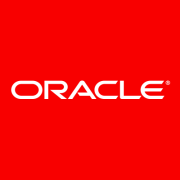Business-to-Business Middleware facilitates seamless integration between diverse business applications, streamlining processes and enhancing operational efficiency. It functions as a critical connector between software systems within an organization.
Business-to-Business Middleware plays a crucial role in bridging communication gaps between enterprise applications. It allows businesses to efficiently manage data flow and ensure business processes are executed smoothly. By enabling integration across platforms, it reduces time-consuming manual effort, minimizes errors, and enhances productivity.
What are the critical features of this category?In the healthcare industry, Business-to-Business Middleware facilitates secure data exchange between disparate systems, ensuring compliance and effective patient care. In retail, it supports real-time inventory management and order fulfillment across platforms, leading to better customer service.
Business-to-Business Middleware is essential for organizations aiming to enhance interoperability between their applications. This connectivity ensures more efficient data management, streamlined business processes, and the ability to respond quickly to market demands.


































Business-to-Business Middleware solutions streamline data integration by enabling seamless communication between disparate systems. They ensure data consistency and accuracy by automating data exchange processes. This approach reduces manual intervention, enhances efficiency, and minimizes errors. You experience a unified view of data across different platforms, facilitating better decision-making and operational agility.
What security features should you look for in Business-to-Business Middleware?When evaluating Business-to-Business Middleware, prioritize robust security features. Look for solutions that offer encryption for data at rest and in transit, user authentication, and access controls. Effective middleware should include activity logging and monitoring to detect unauthorized access. These features safeguard your business data and ensure compliance with industry standards, providing peace of mind as you scale operations.
Can Business-to-Business Middleware help in scaling operations?Business-to-Business Middleware plays a crucial role in scaling operations by supporting seamless integration of new systems and platforms. It enables quick adaptation to market changes and growth opportunities by allowing you to expand your IT infrastructure without disrupting current processes. Middleware ensures that all systems communicate effectively, providing the flexibility necessary for scaling business operations efficiently.
How does Business-to-Business Middleware support legacy system integration?Business-to-Business Middleware bridges the gap between modern applications and legacy systems, allowing you to integrate older systems with new technologies. It acts as an intermediary that translates communication protocols, enabling legacy systems to participate in modern workflows. This ensures that valuable legacy infrastructure continues to contribute to business operations without extensive overhauls, preserving investment while enhancing functionality.
What are the performance benefits of using Business-to-Business Middleware?Adopting Business-to-Business Middleware enhances performance by improving the efficiency of data flow and reducing system latency. Middleware optimizes resource use, resulting in faster processing times and improved application responsiveness. It also provides a centralized platform for managing integrations, allowing you to monitor and address performance issues proactively. These benefits lead to a more agile and responsive IT environment capable of meeting growing business demands.